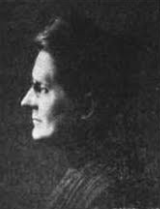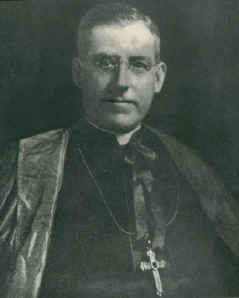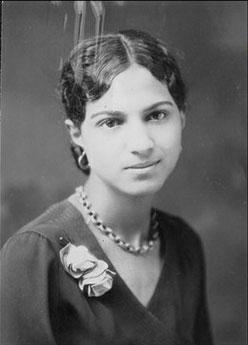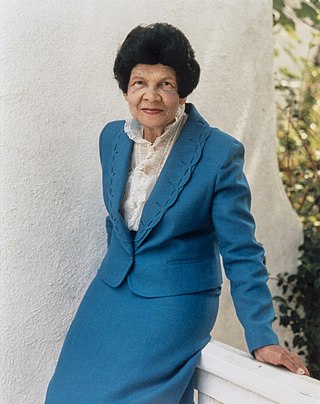
The Chicago, Burlington and Quincy Railroad was a railroad that operated in the Midwestern United States. Commonly referred to as the Burlington Route, the Burlington, or as the Q, it operated extensive trackage in the states of Colorado, Illinois, Iowa, Missouri, Nebraska, Wisconsin, Wyoming, and also in Texas through subsidiaries Colorado and Southern Railway, Fort Worth and Denver Railway, and Burlington-Rock Island Railroad. Its primary connections included Chicago, Minneapolis–Saint Paul, St. Louis, Kansas City, and Denver. Because of this extensive trackage in the midwest and mountain states, the railroad used the advertising slogans "Everywhere West", "Way of the Zephyrs", and "The Way West".

Gratia Alta Countryman was a nationally-known librarian who led the Minneapolis Public Library from 1904 to 1936. She was the daughter of immigrant farmers Alta and Levi Countryman. She pioneered many ways to make the library more accessible and user-friendly to all of the city's residents, regardless of age or economic position. Countryman was called the "first lady of Minneapolis" and the "Jane Addams of the libraries".
"Public Ivy" is an informal term that refers to public colleges and universities in the United States that are perceived to provide a collegiate experience on the level of Ivy League universities. There is no trademark for the term, and the list of schools associated with the classification has changed over time.

Robert Davis Carey was an American politician from Wyoming, a state of which he served as Governor and represented in the United States Senate. He was the first native-born Wyomingite to serve in either position. He was a member of the Republican Party.

Grace Raymond Hebard was an American historian, suffragist, scholar, writer, political economist, and noted University of Wyoming educator. Hebard's standing as a historian in part rose from her years trekking Wyoming's high plains and mountains seeking first-hand accounts of Wyoming's early pioneers. Today, her books on Wyoming history are sometimes challenged due to her romanticization of the Old West, spurring questions regarding accuracy of her research findings. In particular, her conclusion after decades of field research that Sacajawea was buried in Wyoming's Wind River Indian Reservation is questioned.

Eliza Stewart Boyd was the first woman in America ever selected to serve on a jury.
Mary Downing Hahn is an American writer of young adult novels and a former school librarian. She is known for books such as Stepping On The Cracks and Wait Till Helen Comes. She published her first book in 1979 and has since written over 30 novels. Her novel What We Saw was published in September 2022.

James John Keane was an American prelate of the Roman Catholic Church. He served as bishop of the Diocese of Cheyenne in Wyoming from 1902 to 1911, and then as archbishop of the Archdiocese of Dubuque in Iowa from 1911 until his death in 1929.

Eliza Atkins Gleason was the first African American to receive a doctorate in Library Science at the University of Chicago Graduate Library School. In 1941, she established and became the first Dean of the School of Library Service at Atlanta University and created a library education program that trained 90 percent of all African-American librarians by 1986.
Libraries are provided in many prisons. Reading materials are provided in almost all federal and state correctional facilities in the United States. Libraries in federal prisons are controlled by the Federal Bureau of Prisons, U.S. Department of Justice. State prison libraries are controlled by each state's own department of corrections. Many local jails also provide library services through partnerships with local public libraries and community organizations. These resources may be limited, mostly provided through government sources.

William Dubois (1879–1953) was an American architect and politician. He was a prolific architect in Wyoming and nearby states, and served five terms in both houses of the Wyoming Legislature.

Alice Sarah Tyler was an American librarian and advocate.
The Minnesota Library Association (MLA) is a professional association and state chapter of the American Library Association, headquartered in Minneapolis, Minnesota.

Miriam Matthews was an American librarian, advocate for intellectual freedom, historian, and art collector. In 1927, Matthews became the first credentialed African American librarian to be hired by the Los Angeles Public Library.

Cornelia Marvin Pierce was an American librarian, originally from Iowa. She moved to Oregon in 1905 to become the first director of the Oregon Library Commission and, later, the first Oregon State Librarian. She married former governor Walter M. Pierce in 1928, resigning her position to do so.
Nina Eliza Browne was an American librarian and archivist. She was employed as a librarian at Harvard University and Boston Athenæum, a registrar at American Library Association, and an archivist at Smith College. She invented a charging system, known as the Browne Issue System, for libraries by 1895. She was a member, secretary, and publishing board member of the American Library Association, and was a member of the Massachusetts Library Association.

Florence Rising Curtis (1873-1944) was a library educator, chiefly known for her work as director of Hampton Institute Library School beginning in 1925. Curtis was born September 30, 1873, in Ogdensburg, New York. Her father was General Newton Martin Curtis and her mother was Emeline Clark Curtis. Curtis died October 6, 1944, in Richmond, Virginia. Curtis was known as a champion of education and training for Asian and African American library students through her work overseas and with the Hampton Institute Library School.
Ida A. Kidder was a pioneering librarian and the first professional librarian at Oregon Agricultural College, now Oregon State University, she was so loved by her students that they nicknamed her “Mother Kidder”.

A general election was held in the U.S. state of Wyoming on Tuesday, November 5, 1918. All of the state's executive officers—the Governor, Secretary of State, Auditor, Treasurer, and Superintendent of Public Instruction—were up for election. Republicans won all statewide offices by wide margins, and with Robert D. Carey's defeat of Frank L. Houx, picked up the governorship following two consecutive losses to Democrats.













